Last Spring Nader was Visiting Studio Professor at Tokyo Tech’s Midorigaoka Campus with Yoshiharu Tsukamoto. The six-week design studio researched historical architectures for animals and explored animal habitation patterns and parametric design. Below are snapshots of the resulting projects as published recently by Tokyo Institute of Technology. Photography of projects by Tomo Ishiwatari.
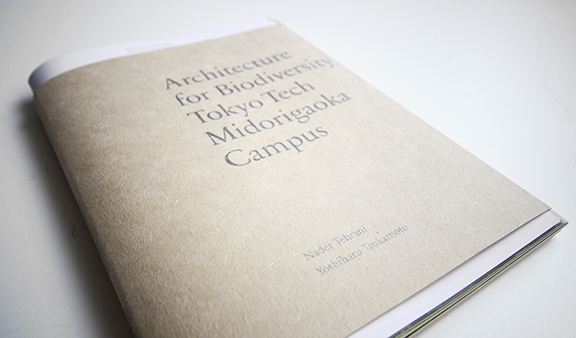
Light Path by Eva-Lotta Holby, Soma Nii, Hikari Hirano, Shifan Liu, Ziyue Ding, and Zimu Wang
“The aim was to create a food chain, rather than a habitat, utilizing wax… In the daytime, the whole structure looks like a landscape. At night, with the special night-light, each wax egg appears to glow, attracting insects as well as leading the path for other creatures like geckos.”
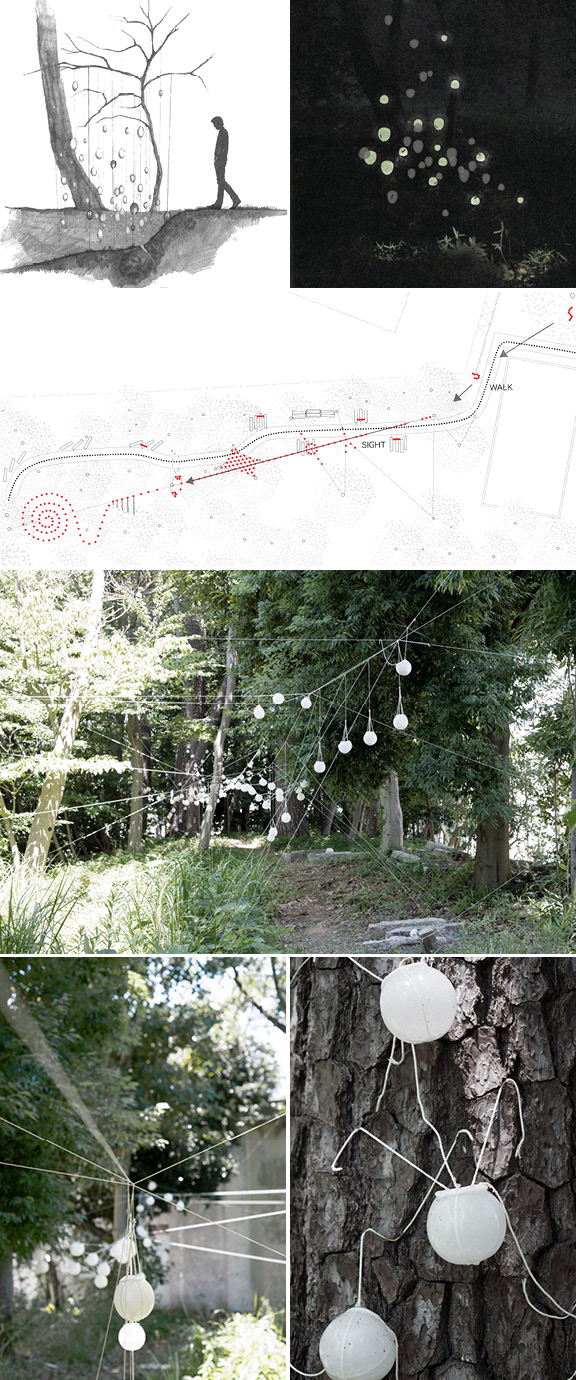
Swallow House by Alexey Golitsyn, Yibo Fu, Hanyi Liu, Yangzom Wujohktsang, Xueqi Wu, Rika Koyachi, and Shota Nemoto
“The main concept is to use recycled umbrellas as the main material for building a structure or providing a space for swallows to build their own nest. Based on the lifestyle of swallows, a dwelling should be up to three meters in height and covered by a roof… In making the best use of the original strength of each umbrella… our structure attains a geometric relationship that supports itself.” More on Swallow House HERE.
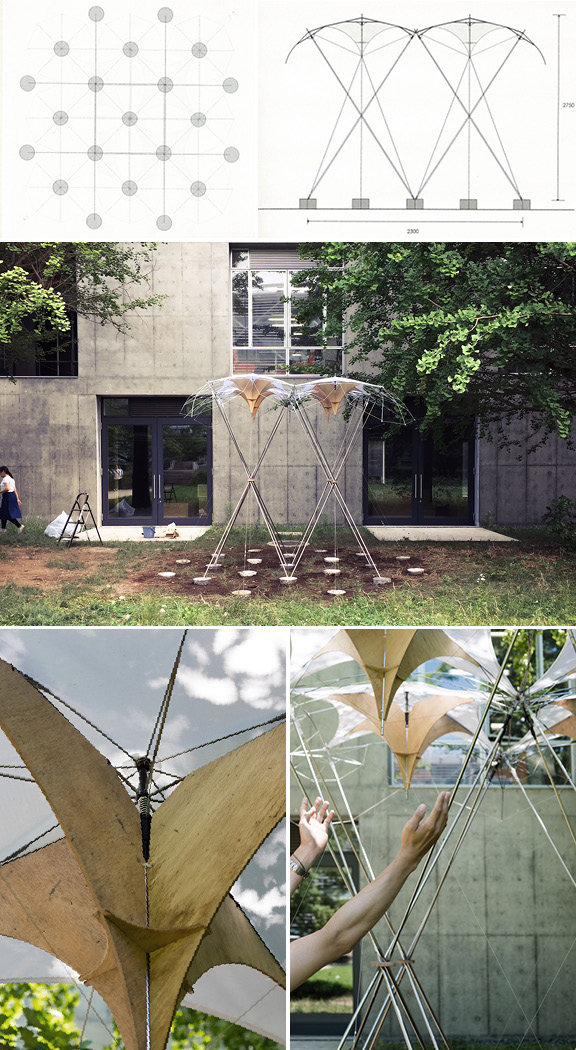
Bat Balance by Tomasini Claudio, Tomoki Shoda, Keizo Nishi, Sayako Urayama, Sinan Kolip, and Dayu Liu
“The concept of balance is inspired by the animal’s behavior and the interplay of foces from roots to leaves that can be found in trees… The joints have not only a structural function but are also the matrix of the spaces that bats need.”
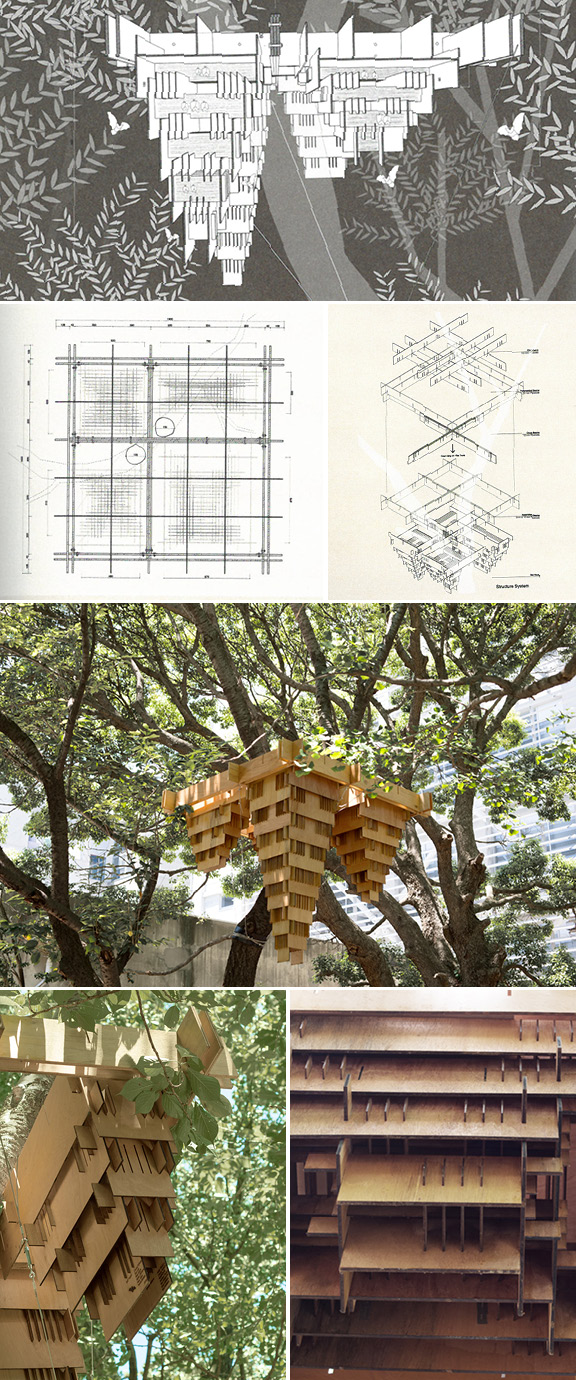
Pigeon Tower by Shota Iwata, Jelmer Buurma, Wenjing Xie, Kotchanot Tiencinvara, Hiroo Ito, Chaoyen Wu, and Anna Kawai
“The basic measurement of one unit and opening is determined by the behavior of plywood and spatial needs of pigeons. The inner wooden [rotating] boxes act as individual houses for the pigeon and help to support the surface structure.”
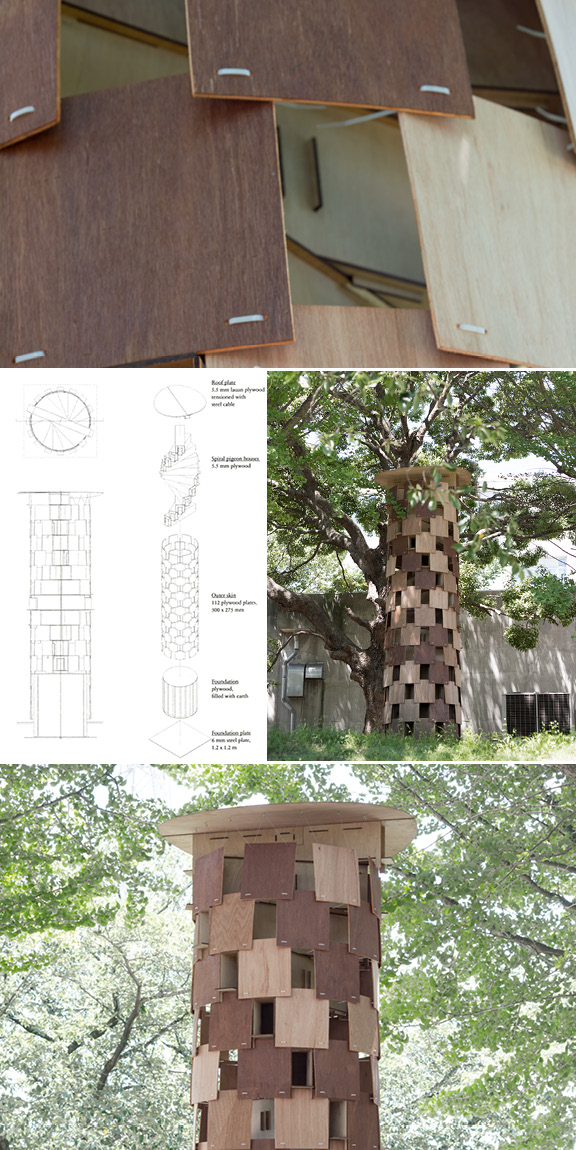
House for Geckos by Jingwen He, Yuto Makishima, Masunami Shimoda, Sebastian Enevoldsen, Saki Yamaguchi, Linjun Luo, and Yahan Zeng
“Geckos are nocturnal and cold-blooded. They prey on insects that have gathered around light. With this in mind, we decided to design a concrete tower with cracks to admit light… Through mock-up tests, we realized the weight of concrete… We understood that layers placed on higher positions should be much lighter than those of the second mock-up”
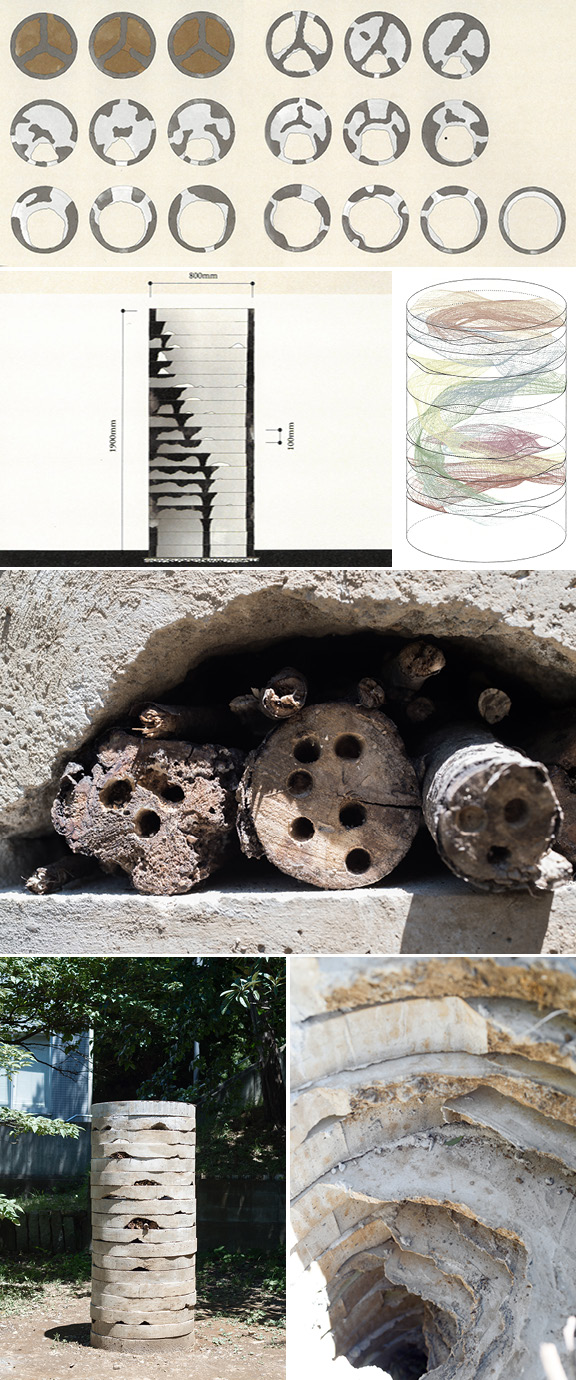
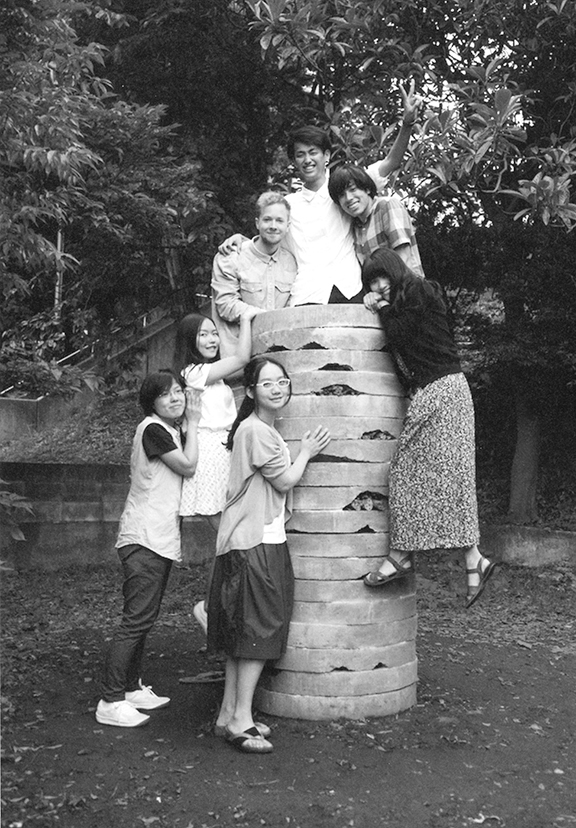
Comments Off on Architecture for Biodiversity at Tokyo Tech